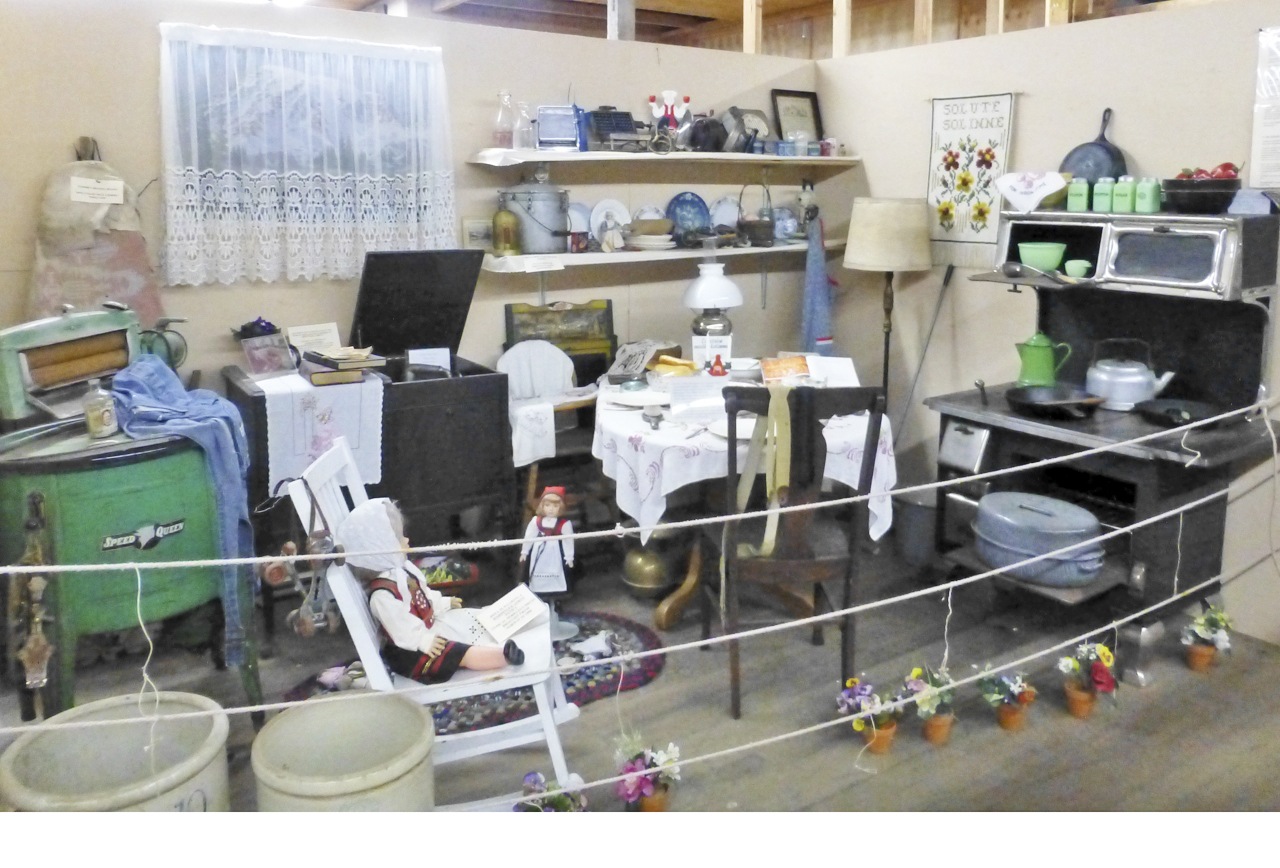If you are attending the Cranberry Harvest Festival this weekend, an additional must-see is the Furford Cranberry Museum in Grayland, less than five minutes down State Route 105 from the Grayland Community Hall. The museum is located at 2395 State Route 105, approximately a mile and a half south of County Line Road.
The museum showcases the history of cranberry farming on the South Beach, as well as what everyday life was like in the 1920s, ’30s and ’40s.
Currently open seven days a week from 11 a.m. to 4 p.m., admission is by donation. All proceeds go toward maintenance of and improvements to the museum, as well as additions of display items.
The museum’s showpiece is the Furford Picker/Pruner, an invention of longtime Grayland resident Julius Furford, who passed away in 1999 at the age of 91. In addition to the Furford Picker/Pruner, the museum features other early cranberry harvesting implements and processing equipment.
Active in his two-man manufacturing plant right up until his death, Furford invented the machine that picks the red-ripe berries in the fall while pruning the vines at the same time. Built one at a time since he perfected his first machine in 1957 and made to last, the pickers are still used extensively in this area, as well as across the country and in Canada. Some machines that are 40 or more years old are still actively productive in the industry.
In addition, the collection includes items that represent other facets of the community’s past such as historical displays of items related to logging, fishing and family life.
Owners/operators
Aberdeen residents Chuck and Gwen Tjernberg purchased the Furford property in late December of 2010. The sale included equipment, patents, patterns and diagrams for the Furford cranberry picker/pruner, which had not been produced for several years.
Tjernberg started producing replacement parts for the famous machine in early 2012 and started producing picker/pruners by that fall. To date, he’s built 22 new machines, with more on order.
Gwen Tjernberg took on the museum project, filling the space with items the couple collected and many donated or on loan from David Furford. The museum opened again in the fall of 2012.
Museum history
Constructed in 1933 by members of the local Finnish community, the museum building was originally a social hall until World War II. During the war years, the Grayland Cranberry Growers Association used the building to dehydrate berries for shipment to servicemen overseas.
In 1946, the Ocean Spray Cranberries Cooperative, which was formed in 1930 on the East Coast, bought out the Grayland Association and constructed a second building closer to the highway. Both continued in use to dehydrate berries until that operation was moved in the early 1950s to the cooperative’s current plant that was constructed in 1946 in Markham.
In 1956, Julius Furford purchased the property from Ocean Spray and converted the front building to a machine shop where he began production of his Furford Cranberry Picker/Pruner.
Because he wanted to chronicle and preserve the history of cranberry production in the Grayland area and the development of his picker/pruner, in 1986, Furford decided to convert the back building — where he had stored his collection of early cranberry farming-related equipment and tools — into a museum.
The facility officially opened on Aug. 30 of that year and kept sporadic hours of operation until 1994, when Furford’s health began to deteriorate, and he decided to shut it down.
In the fall of 1999, with Furford’s blessing, his son, David, and five others formed a nonprofit corporation with the intent of making the dream of a cranberry museum that could be open year-round a reality.
Julius died on Dec. 8 of that year, but was well aware of and pleased with the efforts to revive his dream.
The museum remained open Fridays, Saturdays and Sundays for the next several years, until it could no longer support itself and the association dissolved.
Today Furford’s dream of a cranberry museum — “for the people, especially kids” — is once again alive and thriving under the watchful eye of the Tjernberg family.
Lifelong harborites
Both Chuck, who is in his early 80s, and Gwen, in her late 70s, were born and raised in Aberdeen.
Chuck had a long career in the construction industry, and as a building contractor he honed the mechanical and welding skills that now serve him well in this latest venture building cranberry pruner/pickers. Gwen enjoyed a long and successful career as an employment counselor with the state Department of Employment Security. Until they sold the business a couple of years ago, the Tjernbergs also owned and operated Ace Electric in Hoquiam for 22 years.
Both also have been active in their community and Grays Harbor, serving for many years on various boards and commissions.



